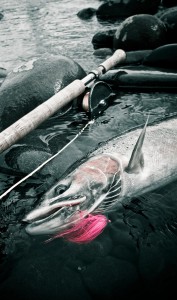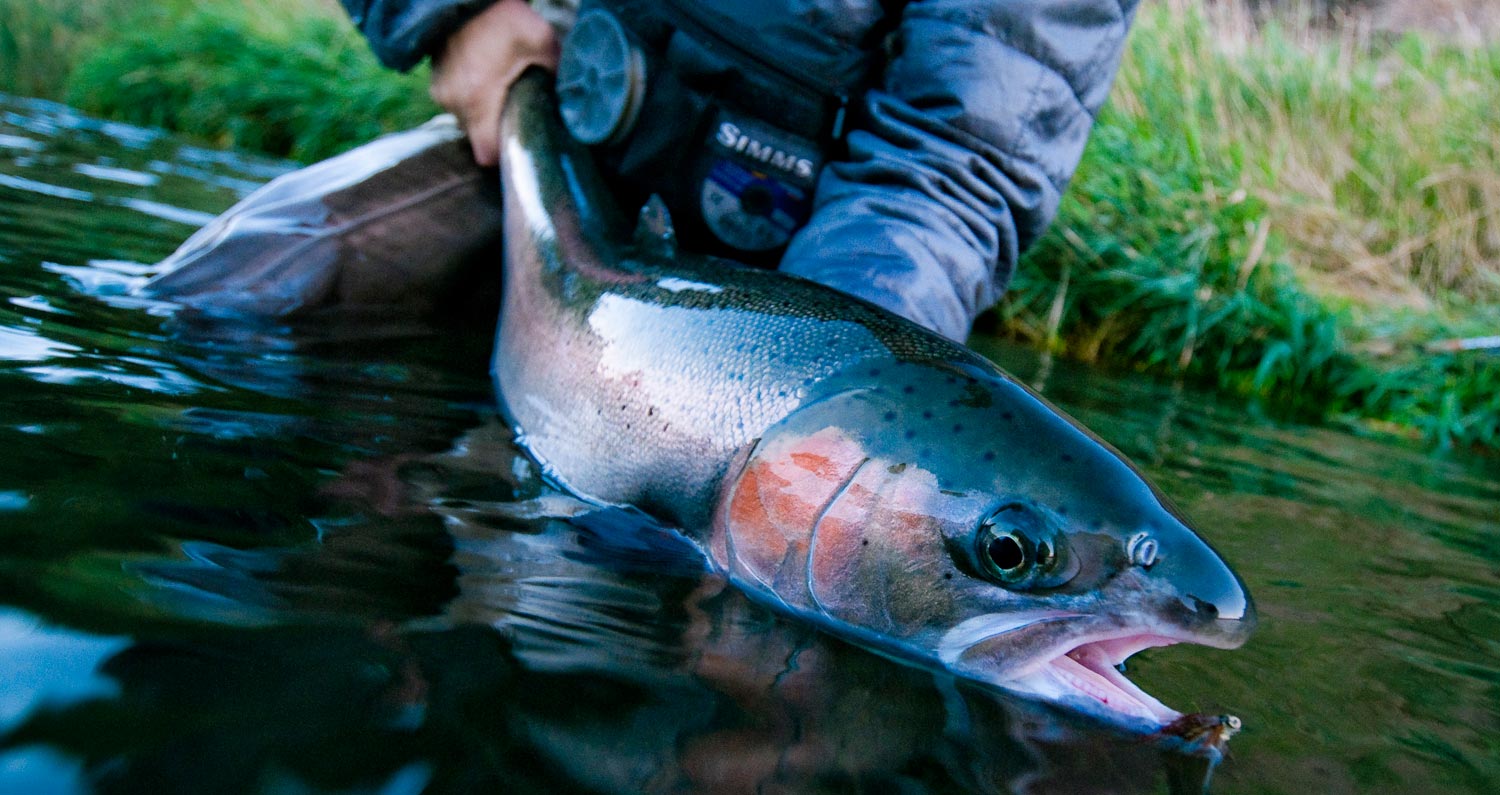By Louis Cahill
The relationship between Steelhead and resident rainbow trout is one of the most fascinating in nature.
There is, of course, a huge argument between anglers over the nature of steelhead and trout, which brings with it a fair amount of animosity. The fish themselves, however, apparently have no such prejudice and it turns out that steelhead anglers owe a great debt to the resident rainbows. Without those trout, we would likely have no steelhead left.
Steelhead and rainbow trout are genetically identical. There is no debate over this, it’s a fact. The two are separated by behavior only. If a trout runs to the ocean and matures there, they are considered a steelhead. If they stay in the river, they are a trout.
There is an interesting thing which happens in the selection process. Whether or not a fish migrates to the salt is determined by the rate at which they grow, which is determined by their individual metabolism as well as environmental stimuli. If a fish develops a certain amount of fat by a given age, hormones are triggered which tell the fish to stay put in the river. This is generally the case with fish who have slower metabolism and abundant food. Those fish will be resident rainbow trout.
On the other hand, fish with higher metabolism, who burn calories rather than convert them to fat, will go to the ocean for its abundant food sources. Those fish are steelhead. Perhaps the higher metabolism is responsible for their natural athleticism and power, as much as their ocean environment. Either way they are a truly special sport fish.
Another interesting component in the mix is that the males are the fish which show plasticity. That is to say that a female born of a steelhead female, will be a steelhead, where as a male may become either steelhead or rainbow.
This is not simply a coincidence. It’s the key to the survival of the species.
 When given the chance, these male resident rainbows will breed with steelhead females. And when I say, given the chance, it doesn’t mean that they are invited. These male trout exhibit a behavior called sneaking. Once a female steelhead has dropped her eggs and the male steelhead comes in the fertilize them, these sneaky male trout do something most of us would find unpalatable.
When given the chance, these male resident rainbows will breed with steelhead females. And when I say, given the chance, it doesn’t mean that they are invited. These male trout exhibit a behavior called sneaking. Once a female steelhead has dropped her eggs and the male steelhead comes in the fertilize them, these sneaky male trout do something most of us would find unpalatable.
When the male steelhead releases his sperm, he is momentarily incapacitated, much like the rest of us. At this moment the sneaky trout will slip under him, blocking the steelhead sperm with his back, and fertilize the eggs himself. Take a moment to process that. It’s a dirty trick but you have to respect his commitment.
So how is this a good thing?
You might be tempted to think that the sneaker is diluting those pure steelhead genes, but you’d be dead wrong. What he’s doing is hedging nature’s bet. He’s reintroducing his slower metabolism to the steelhead gene pool. This means that a certain number of male offspring from this union will become resident rainbow trout.
But what does this accomplish?
I’ll use an analogy which many of us are familiar with, saving for retirement, because that’s really what nature is doing. Planning for the future. When a fish travels to the ocean, it is taking a huge risk. Many of these fish, maybe most, will not survive. Those who do will reap huge dividends. A risky investment, with the chance of big returns. If conditions are not favorable, the species could collapse.
Think of those resident rainbow trout as a genetic savings account. Minimal to moderate growth, but lots of security. By diversifying the steelhead genetics, these rainbow trout insure diversity in the steelhead population. This makes them more resilient as well as the promise that their genes are stored safely in the river. I don’t know about you, but that blows my mind.
I was recently fishing for steelhead on the Deschutes River in Oregon and the return was down from previous years. Fishing was still great, I got four on my first day, but not what I’m used to. It was the single salt fish that were missing. The generation of steelhead that would be returning to spawn for the first time. These fish faced tough conditions a few years back and many were lost. This is exactly the situation where this safety mechanism saves the day. I feel much better about the future of one of my favorite rivers, knowing those sneaky little rainbows are hard at work.
Steelhead everywhere are in danger. Habitat destruction, commercial fishing and rising global temperatures are taking heavy tolls on this, the greatest of sport fish. Please take a minute to check out some of the groups working to save them, and get involved.
Support Wild Steelheaders United and The Native Fish Society.
You can learn more on this fascinating topic from biologist John Macmillan in his awesome podcast with April Vokey.
Louis Cahill Gink & Gasoline www.ginkandgasoline.com hookups@ginkandgasoline.com Sign Up For Our Weekly Newsletter!


I did not know that. Interesting article. I have to read it again. Nature is so fascinating, thanks,
“Sneaker male” behavior has also been observed in spawning bluegill. That makes me wonder if this is perhaps widespread across many species of fish?
What an amazing article. I just learned so much, even though I’ve been catching trout and steelhead my whole life!
For more on this, see John McMillan’s podcast, as noted, but also his fascinating clarification of his podcast comments at Vokey’s website by Googling “john mcmillan steelhead metabolism” and selecting the first entry.
For other examples of sneaking, see famous anthropologist Lionel Tiger’s description of eerily similar male primate behavior he labeled “the sneaky f***er” in a peer-reviewed paper in 1971. According to custom, once that term was published, all anthropologists referring to that behavior had to use that term. Tiger has a real sense of humor for an academic…
Pingback: Of Interest: Clearing up Oncorhynchus mykiss as bows and steelies | Fly Life Magazine
Wow, thanks for the amazing insight. Keep up the good work!